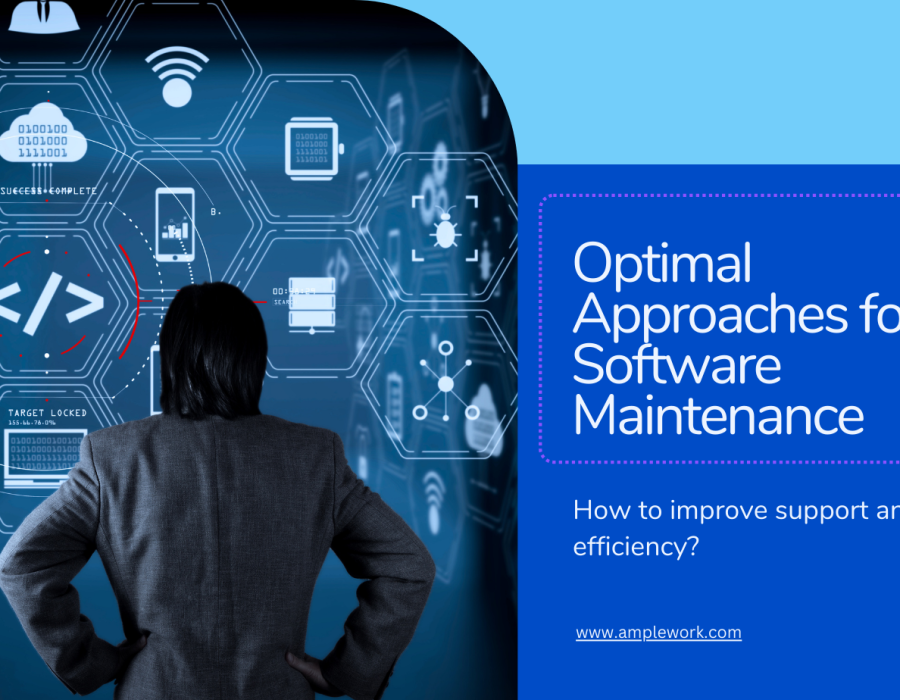In today's swiftly evolving digital landscape, the optimal performance of software is imperative for both businesses and individuals. Imagine driving a well-maintained car that effortlessly transports you from one destination to another. Similarly, view software as the engine powering your digital experience, necessitating a comparable level of care and attention. In this article, we will explore best practices for efficient software support and maintenance, steering away from technical jargon and delving into easy-to-understand insights.
The primary question is: What is the software maintenance strategy from a business standpoint, and how can you establish a robust foundation for cost-effective and beneficial software maintenance and support services?
First and foremost, consider software maintenance as a fundamental aspect of your business, ensuring the delivery of a reliable, secure, and up-to-date product throughout its entire lifecycle. Here are the key approaches to adhere to:
1. Develop a Comprehensive Service Level Agreement (SLA):
Create a detailed SLA that defines the terms, expectations, and responsibilities between the software maintenance provider and the client. It should encompass parties involved, scope and objectives, services under the maintenance agreement, service levels, metrics, maintenance schedule, and availability. This facilitates finding a suitable provider aligned with the initial goals.
2. Establish a Maintenance Team:
Assemble a maintenance team with relevant technical expertise based on the SLA. If your in-house team lacks required specialists, consider hiring a dedicated team from an external provider.
3. Foster Regular Communication Within the Product Team:
Facilitate effective process management by promoting regular communication among stakeholders, developers, maintenance engineers, and business development specialists. Align maintenance activities with the business product development vision.
4. Design a Practical Maintenance Framework:
Develop a framework defining parties involved, tools, and processes for maintenance activities. The hired maintenance team must adhere to your requirements and meet the defined toolset and processes.
5. Implement Root Cause Analysis (RCA) and Failure Modes and Effects Analysis (FMEA):
Conduct RCA to identify potential issues and their impact on end-users. FMEA assesses failure modes by severity, occurrence, and detection, enabling the maintenance team to plan preventive activities based on prioritized scope.
6. Automate Routine Maintenance Activities:
Leverage automation for software testing, performance monitoring, code reviews, production monitoring, and security audits. This significantly saves time and reduces maintenance costs.
7. Collect and Analyze Valuable Data:
Track records of maintenance activities implemented changes, and customer feedback. Analyze market demands and trends to understand opportunities for improvements and create a balanced software maintenance scope.
8. Ensure Proper Changes Documentation:
Document all code and software infrastructure modifications appropriately to ease future maintenance challenges.
Read more: Overcoming Challenges in Software Maintenance and Support Services
Conclusion
For long-term success, integrate software maintenance into the product development strategy as a continuous, well-thought process emphasizing proactive maintenance. While software maintenance can be resource-intensive, optimization is achievable by clarifying goals, planning maintenance scope and processes, hiring a qualified team, automating routine activities, and conducting continuous analytics for meaningful insights.
Amplework in San Antonio (USA) stands as a pinnacle in the mobile app development realm, embodying excellence and innovation. We commit to addressing software challenges through efficient maintenance practices and positioning them as a trusted partner. With expertise in software development, UI/UX development, DevOps, quality assurance, marketing, and business analytics, we ensure your software stays up-to-date and bug-free through dedicated maintenance assistance.





Comments